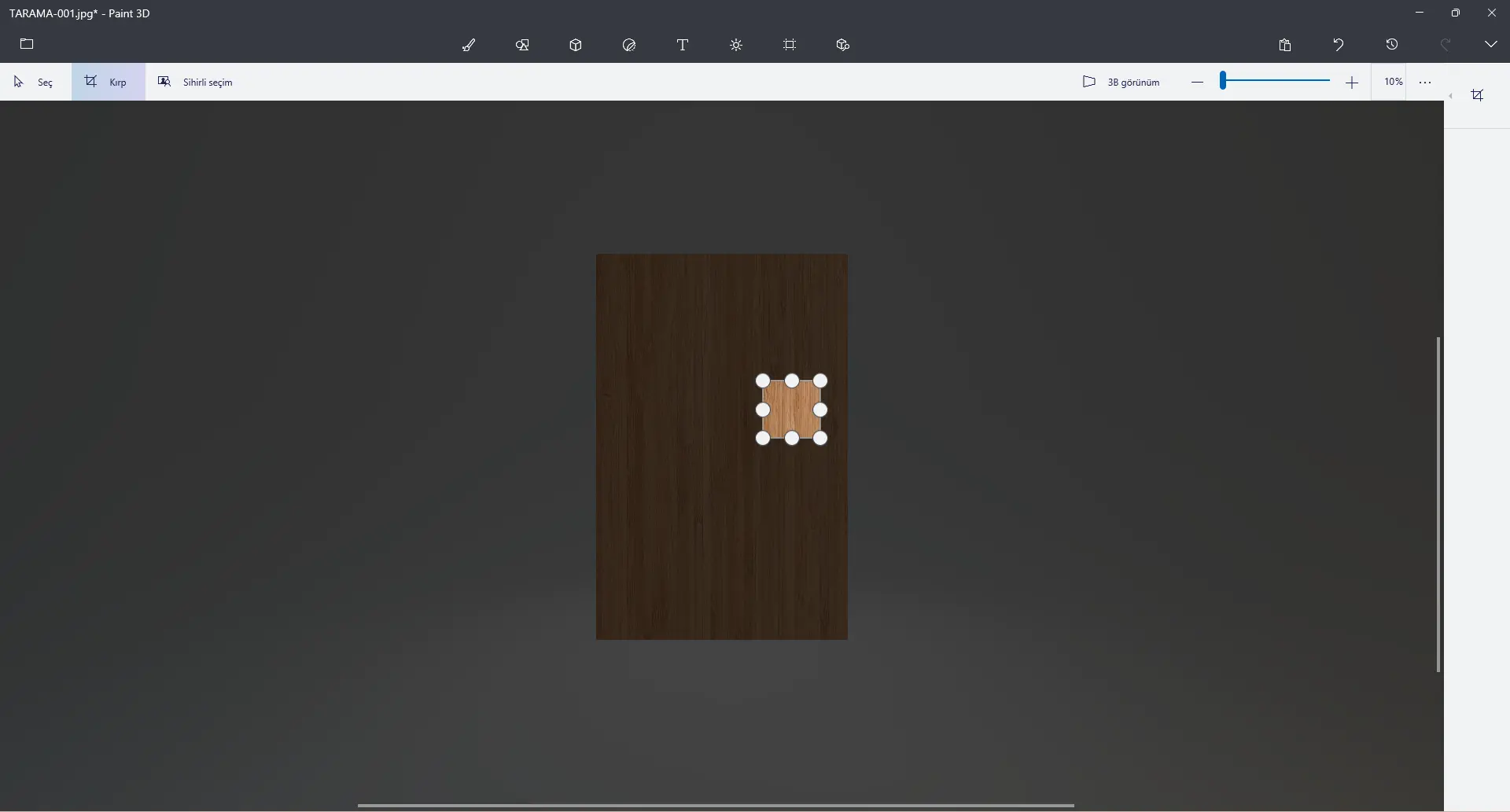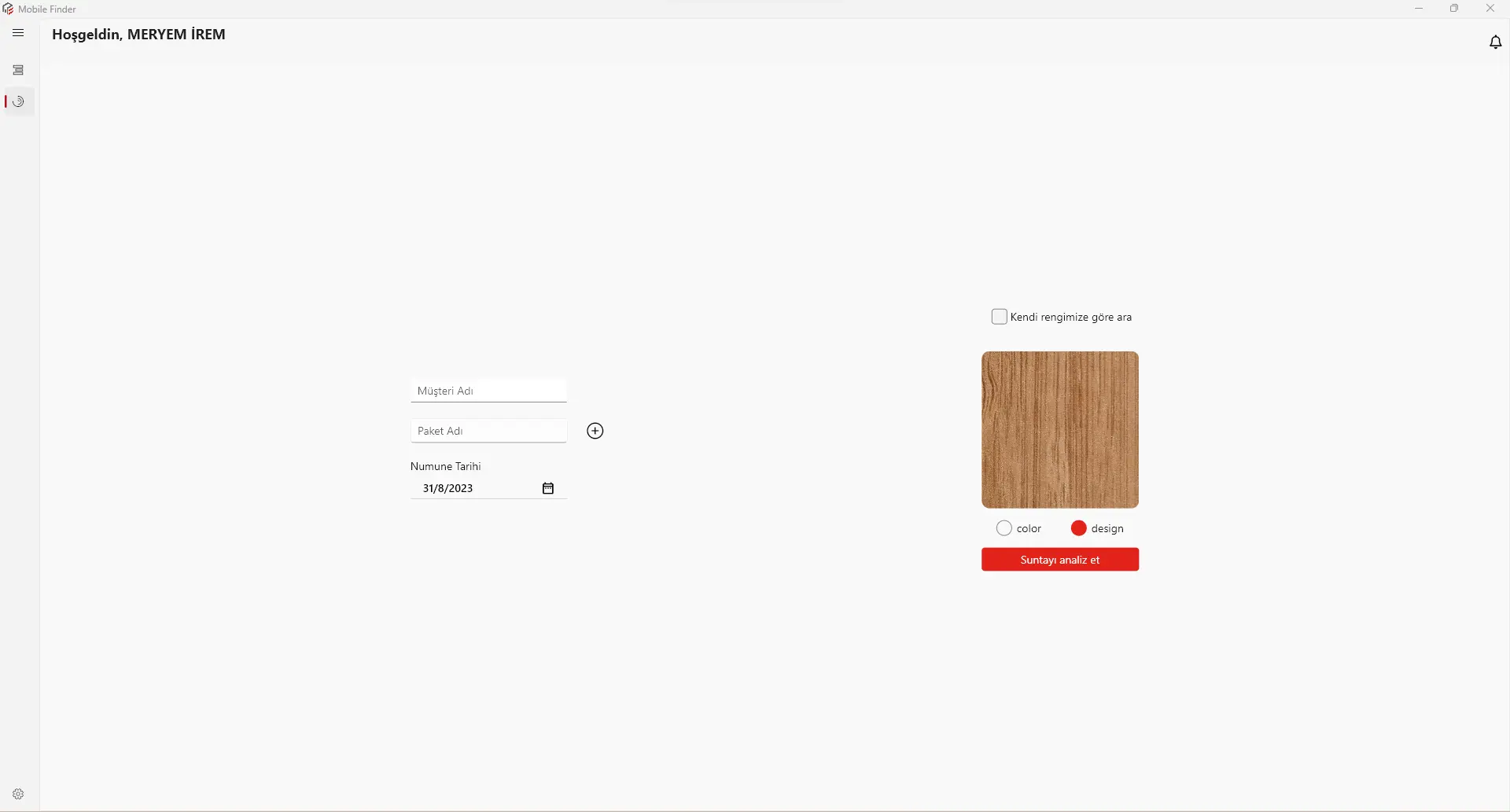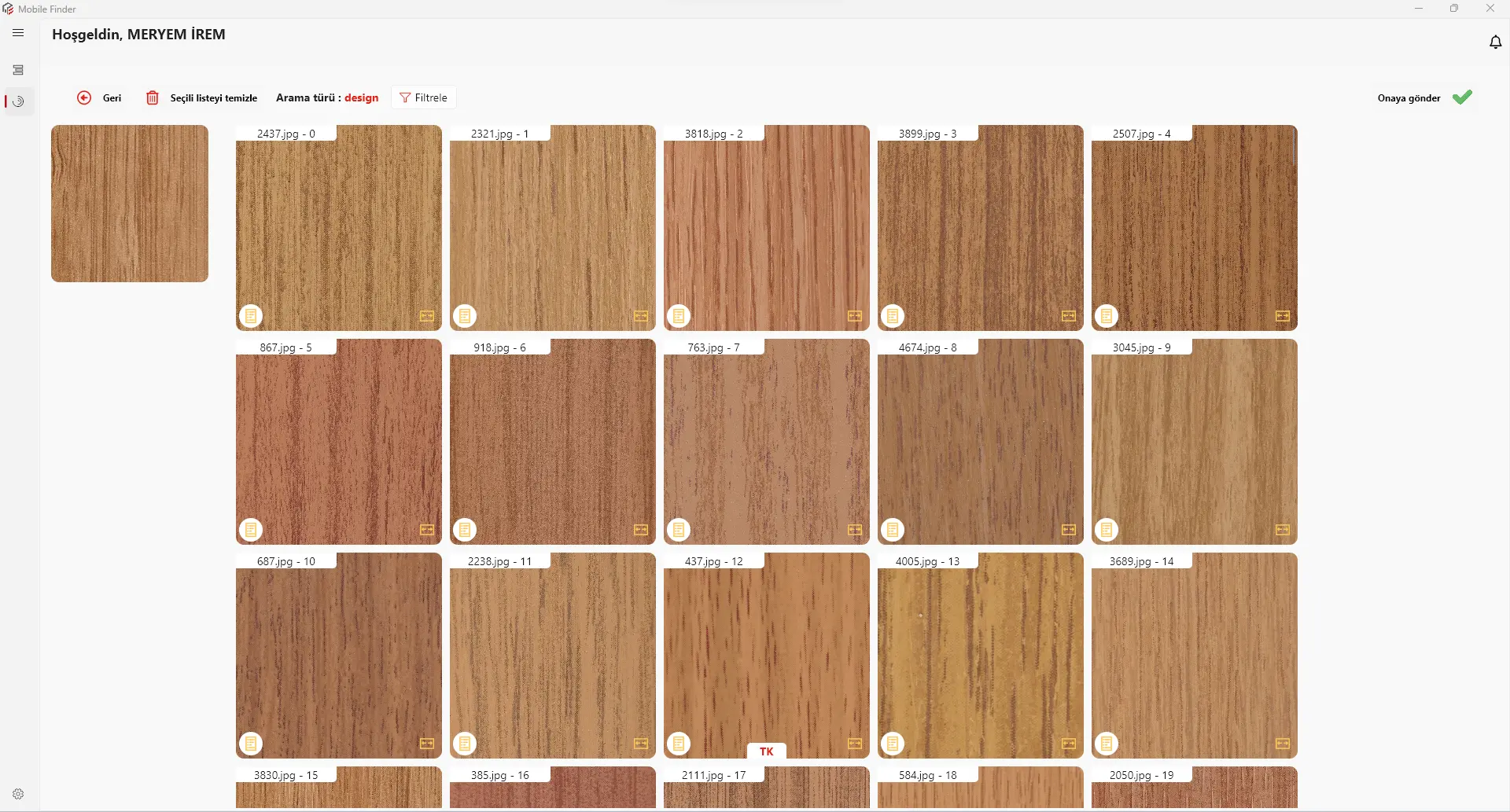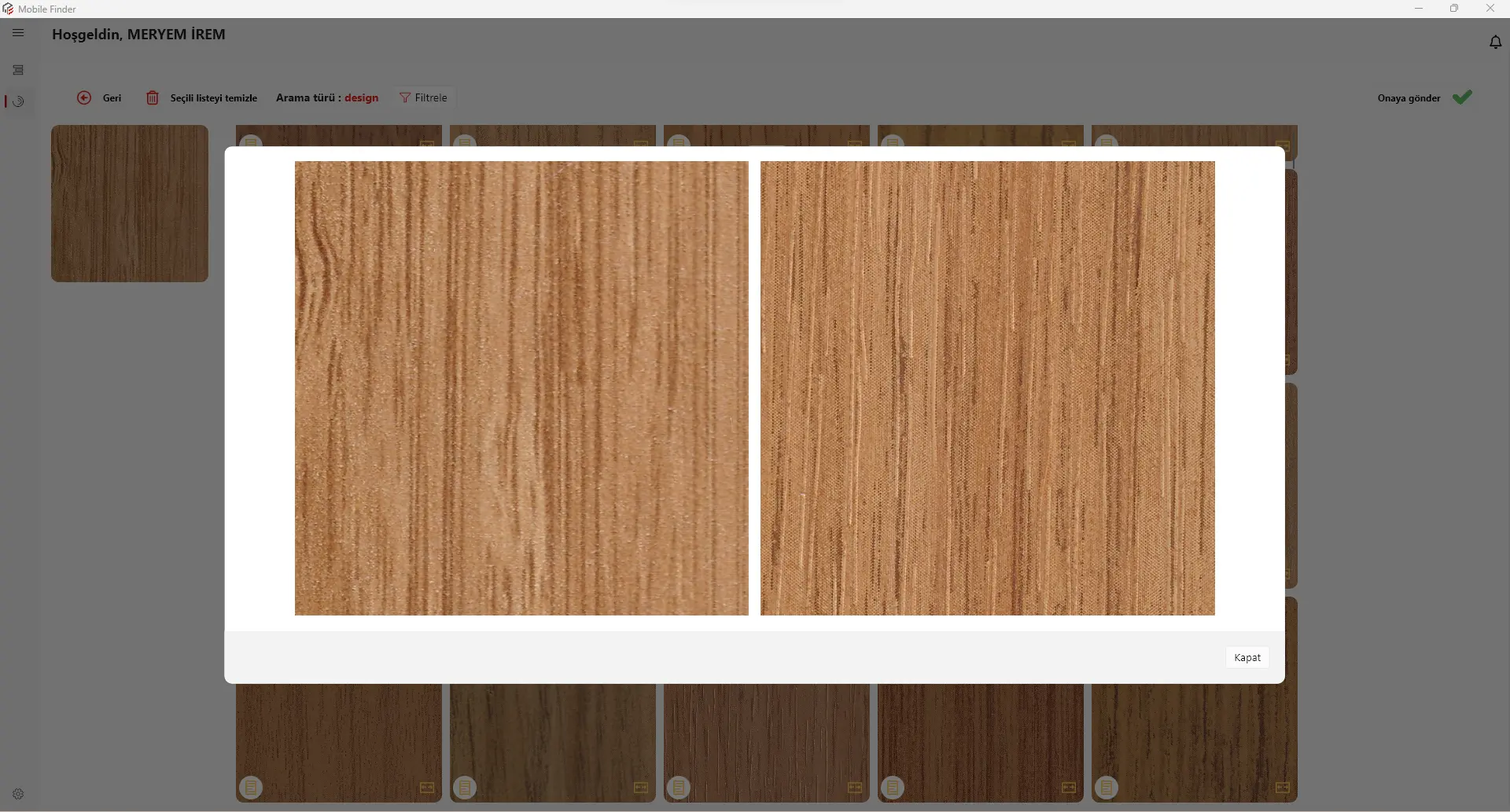DECOFINDER
The most used surface materials in the furniture industry:

Panels, also called melamine, obtained by printing decor paper on chipboard, also called “chipboard”.

MDF panels produced by printing decor paper using the same method. The same panels can also be coated with thermoplastic materials such as acrylic or PVC.

Laminate (HPL) products, which are put on the market as surface application by covering the paper layers that are compressed by pressing with decor paper.
Impregnated decor papers are used in all 3 products and it is the most common wool edge banding used to cover the edges of the panels produced as 122mm*244mm or 183mm*366mm with the same color. For this edge banding, 99% thermoplastic material is used instead of paper, since its mechanical and chemical resistance is very high. We can list the most commonly used ones as PVC, ABS and PP.
These edge bands, which are produced by the extrusion method, should be painted to be most compatible with the panels released to the market. The more identical the patterns are, the more preferred that tape is, and the companies that have the largest number and variety of pattern cylinders are more successful. While the material is being dyed, it passes through 3 different pattern rollers, sometimes one, usually two.
There are tens of hundreds of companies in the world operating in only the 3 groups above. These companies also have thousands of different designs, and new designs are added every day, and the old ones are removed from the product range. However, the colors extracted from the color charts of the leading countries can become fashionable even after 5 to 10 years in the following countries, which complicates the work of an edgebanding manufacturer trying to do business around the world and compels them to make thousands of different patterns.
New panels in new colors are constantly coming to an edge band manufacturer company, and when these requests come, the first thing to do is to review the pattern archive:
A
If the same or a similar color has been worked before, take it out of the archive and send it as an alternative.
B
If there is a work that is different in color but similar in pattern, to produce on a prototype production line called “trial line” or “color work line” and send it for approval.
C
If it is a request that is not in the archive either in terms of color or pattern, then to have a special pattern cliché (cylinder) made for this color. This cylinder is made by engraving (carving) method and is both an expensive and time-consuming process. In addition, there is absolutely no guarantee of success on the first try, sometimes the cylinder may go back and forth two or three times to renew the pattern work.
When the number of pattern rollers at hand is over a thousand and the desired pattern is obtained with 2 different pattern rollers on average, 1000*1000 = 1 million different patterns can actually be made in the manufacturer’s inventory, but new pattern rollers continue to be made every day, every week.
Some of these demands are indeed new and unique patterns that cannot be met with existing rollers. However, some of them are new cylinders that are produced unnecessarily as a result of faulty visual or memory search, while in fact they can be met with existing inventory.
Digital scanning of the entire archive and creation of a data base, both to prevent this new (unnecessary) cylinder construction, and to present the best (making sure that the entire archive is reviewed instead of the matches found by scanning at that moment) or the best ones to the requested pattern. Scanning these scanned files with an artificial intelligence program and guiding the person looking for the color provides both a great time and cost savings.
With this program, new panels coming from the market can be scanned with any printer, the scanned file is placed on one side of the screen as the TARGET, all colors in the archive are scanned and listed next to the target color from the closest to the farthest, and it is possible to make a comparison on the computer screen. With this comparison, instead of looking at the entire archive, ONLY the patterns recommended by the program can be removed from the archive and checked by eye, and the most compatible ones can be sent as an alternative quickly.
With the addition of new colors to this archive on a regular basis, requests are returned with more accurate color options in the future, and the cost is gradually reduced due to the number of color trials.
What is the process of scanning a newly introduced color to a market or a newly purchased panel and removing similar options? How long does it take or how many steps does it take?
First of all, the requested color is scanned in the scanner and the desired region as the edge band is cut from this scan. It should not be forgotten that a suitable tape cannot be made all over a panel. A region must be selected (preferably by the customer) and care should be taken to ensure that the selected region is a linear area that repeats each other rather than a natural tree pattern.
01
The area you see in the appendix has been cut as the area closest to being an edge band of an A4 size particle board. This cut area is loaded into DecorFinder.

02
The loading process can take up to 15-20 seconds.
After the installation, the program compares hundreds and thousands of colors in its archive with the area selected as the TARGET, with the Siamese twins process, and ranks them from the first to the last in terms of proximity.

03
If the user wants to see these options next to the scanned area, he or she can click on one of the edge band samples on the right side of the screen and place it next to the scanned TARGET piece for a healthier comparison.

04
The files of the selected favorite candidate colors are extracted from the archive and the final decision is made by the visual inspection experts. The final decision should never be left to DecorFinder, because there is always a risk that two lights with different spectral components, called metameres, will be perceived as the same color by the human visual system, and the expert examining the options should EVERY TIME look at the candidate parts under different lights and make their decision.
